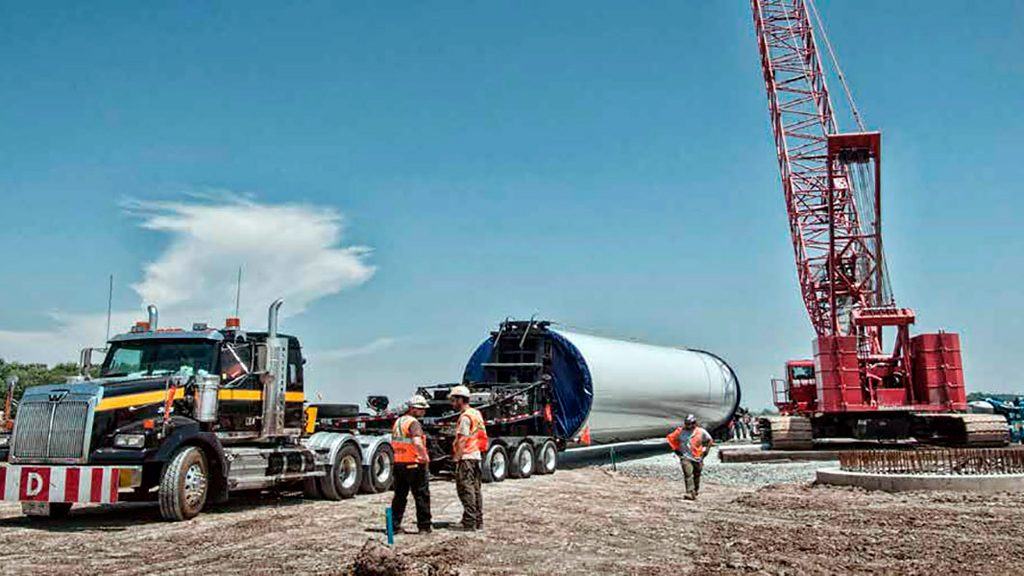It’s a project of superlatives — the largest wind project in Ontario, the largest on-reserve wind installation in Canada and the tallest turbines in North America.
San Francisco-based Pattern Energy Group announced Dec. 26 it had secured $1 billion in funding and would be proceeding immediately to construct the mammoth 300-megawatt Henvey Inlet Wind project to be built off Georgian Bay in partnership with the Henvey Inlet First Nation.
The tiny First Nation has been working on the project for over a decade, obtained a 20-year Feed-In Tariff (FIT) contract from the province in 2011 and working through its power subsidiary Nigig Power Corporation, contracted with Pattern circa 2014.
Henvey Inlet Chief Wayne McQuabbie said in a statement, “This project’s watershed permitting and real estate regime sets an example for responsible economic development that protects and preserves First Nation land while also generating revenue for future generations.”
Pattern will install 87 Danish-made Vestas 3.45-megawatt turbines with a 136-metre rotor diameter and 132-metre hub height on Henvey Inlet Reserve No. 2, 71 kilometres north of Parry Sound.
We aren’t just building a wind farm, we’re building an economy,
— Ken Noble
Nigig Power Corporation
Jody Law, senior manager of business development for Pattern, noted the blades and the turbines will be manufactured in Ontario.
“It is actually two big projects together when you look at the transmission lines,” Law explained. “The wind farm has 87 turbines on rock and difficult terrain, and it also has a 90-kilometre transmission line which is a complicated project on its own.”
Construction began immediately after funding was obtained in December and completion and commissioning is expected by mid 2019.
Aecom worked with Pattern on environmental permitting, CanACRE of Toronto assisted with land acquisitions and easements, Powertel of Georgia will be the contractor for the transmission lines and Quebec-based Construction Energie Renouvelable will build the wind farm.
The project is expected to create 500 jobs during construction.
“We have made a large commitment to the First Nation to hire workers from member groups, general labour and any position they can help to fill,” said Law.
“It is one more opportunity for those First Nations to be involved and to benefit from the project.”
The partners also worked with the Magnetawan and Shawanaga First Nations to arrange co-operation on the transmission line that will come through their territories, securing income and employment opportunities, said McQuabbie.
The line will follow Highway 69 south for 54 kilometres then cut inland into the “back bushes,” said Law, where it meets with 500-kilovolt Hydro One lines and proceeds south to Seguin, outside of Parry Sound. There will also be access roads and laydown areas so there were a lot of property interests to deal with, making that component of the project “very complicated,” said Law.
On the environmental side, the discovery of numerous species at risk required diligence as permitting proceeded, noted Law, who works out of Pattern’s Toronto office. Blasting and tree cutting puts extra pressure on those species, he said.
The quality of the wind coming off Georgian Bay was a key factor in Pattern deciding to get involved. The difficult terrain — it will be built on rocky Canadian Shield landforms — and the small size of its partner were actually seen as positives by Pattern, he said.
“This is a difficult project and we like to look at difficult projects that other developers might shy away from,” he said.
“Not that we take a lot of uncalculated risks but we like projects that have a challenge to them and can be pushed further than what has been done on past projects. This one is a great example in terms of First Nations relationships, First Nations land laws and developing such a large project with a First Nations partner.
“On the technical side, it is the largest, tallest turbine in North America and it is something that you can only do with certain site conditions. That is the kind of thing that excites the culture at Pattern.”
The Henvey Inlet build will be Pattern’s seventh green energy project in Ontario.
The province’s system of offering long-term FIT agreements makes Ontario a reliable place to invest, said Law.
“A large part of our business model is investing in projects that have stable long-term revenue streams,” he said.
Nigig and Pattern are 50:50 partners. There are about 900 enrolled members of the Henvey Inlet band, with 200 of those residing on-reserve.
“We aren’t just building a wind farm, we’re building an economy,” said Ken Noble, Nigig’s president and CEO, in a statement.











Recent Comments
comments for this post are closed